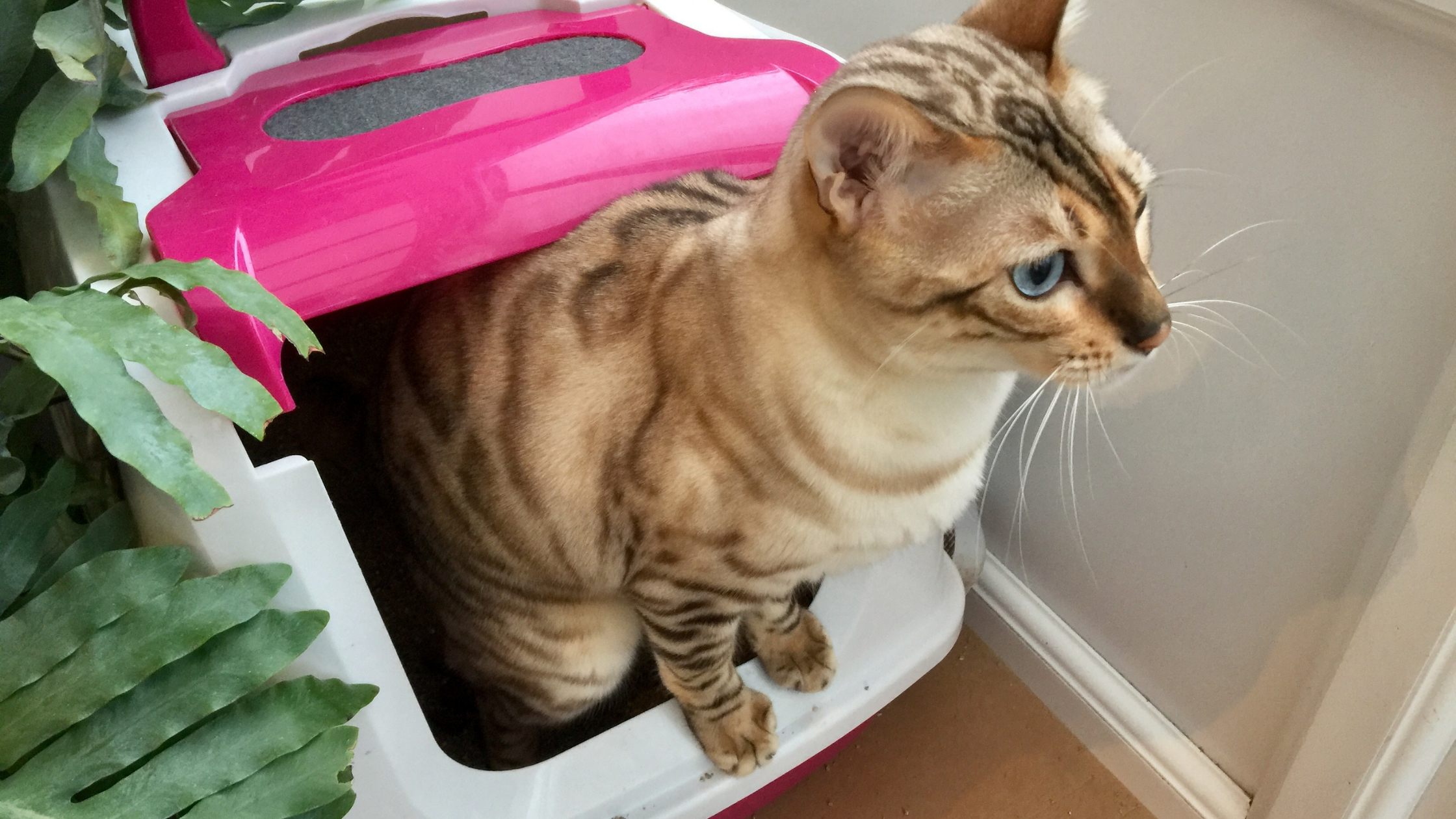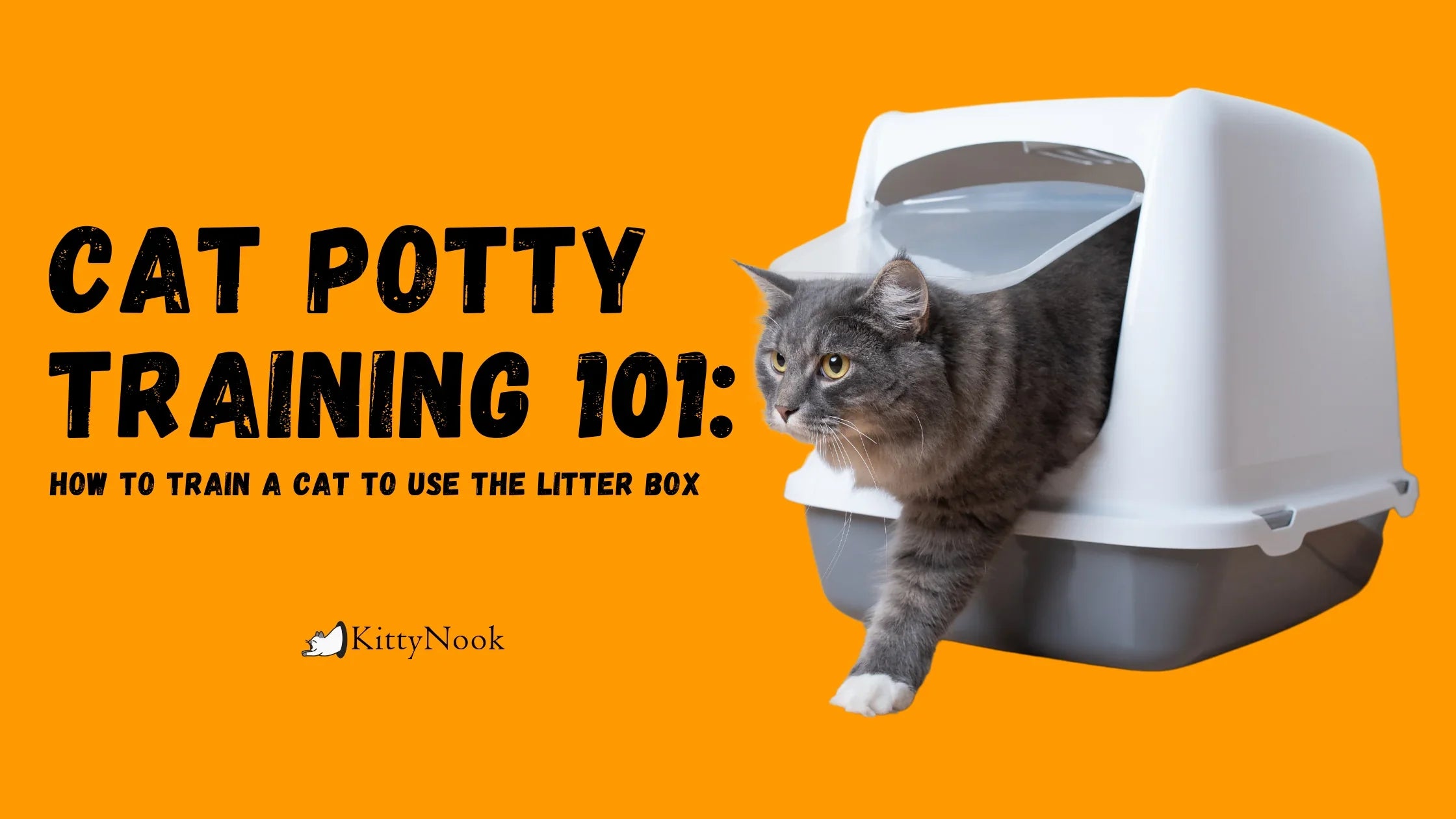If you're a new pet parent, the question of how to litter train a cat is perhaps what's on the forefront of your mind. Do not worry because litter box training is a relatively straightforward affair. Many cats, especially adopted ones, arrive in their new homes knowing how to use a litter box. At the same time, most that their cat mothers haven't trained are guided by a strong impulse to bury the evidence after doing the act. Nonetheless, this guide should help you greatly if you need some pointers.
The Litter Training Run Down

Are you fostering or caring for a kitten? You may be shocked to know that kittens younger than three weeks old will need to be manually stimulated to pee and poo after every feeding.
After the three-week point, though, kitties should begin exploring—and the litter box is a natural area for them to go to. That natural behavior of doing their thing in something sandy is believed to have come from cats' sand-dwelling distant relative, the African wildcat.
It takes a little bit of motivation, but they will typically start exploring the litter box. It's all about patience, determination, and remembering that your cat will not be perfect at it every time.
If you adopted a grown-up cat, they'll probably know how to utilize the box and will automatically seek it out when they need to "go"—no motivation required. However, some felines develop a negative association with the box throughout their lifetime and might require additional help.
Retraining cats to use the box is a long and arduous process. It's about the placement—making sure it's in a safe place, so other pets or kids cannot enter it or ambush them when they're using it. For example, a cat might have been in a home where other pets will attack them each time they go in the box, so they may have an aversion to using it.
But first thing's first: you must stock up on litter training supplies.
Products You'll Need

To start your cat on the right course to developing good toilet routines, you'll need a couple of supplies:
Litter Boxes: It's an excellent idea to have more than one litter box per the number of cats utilizing them, so if this is your first cat, you'll want to have two boxes. Place them in easy-to-locate areas that also provide privacy. If they're too exposed, your cat might not feel comfortable enough to use them.
Cat litter: You'll find a lot of options, ranging from low-cost, non-clumping litter and clay litter to premium alternatives made from materials such as pine pellets and recycled paper, and even wheat. While cats aren't extremely picky on the type of litter you use, some can be very particular and won't use the toilet if they change in smell or appearance. Your best bet is to start with an odorless clumping litter, and then if you want to switch, you can experiment as soon as your cat is already litter-trained.
Treats and toys: This is not as important as the above two, but it will be helpful if you reward your cat with play or a treat every time your cat uses the kitty box. You can also utilize toys and even applause to help create positive associations when using the box. However, you'll need to wean them off of anticipating a treat whenever they use the toilet.
What You Need To Know About Litter Training a Cat

All you need to start is a litter box and cat litter. However, we also recommend the Waterproof Cat Litter Mat to help catch any litter stuck on your cat's paws to safeguard your floor and reduce the need for sweeping.
Get a low, open-sided can for kittens and older felines who may have a problem getting in and out of the can. You can also remove the front part of a litter box to make it easier for them.
When it comes to the type of cat litter, we suggest using the finest litter you can find—the closer to the fineness of sand, the better. Just think of what a cat would encounter in nature. Avoid using clay litter for cats. Because of a clay litter's rough surface, it might cause digestive issues when ingested.
If you live in a multi-cat house, there is a simple formula to know the number of boxes one should have in the place: two for every cat. So if you have one cat, you must have two litter boxes. If you have two, you should have four boxes, and so forth.
How to Litter Train a Cat

As mentioned above, using the box ought to come naturally to most cats and kittens. As a matter of fact, in most cases, litter training can be broken down into five basic steps.
Select the appropriate litter box
You want to pick a box that your cat can conveniently enter and come out from. Often, elderly cats stop using the litter box due to an achy body, so think about using a low-sided box for older cats and kittens that may not be big enough to climb up into a larger container.
Find the ideal litter
Utilize natural, odorless ones; sometimes, crystal litter, clay clitter, or those with a heavy fragrance may dissuade cats from using the can. Switching over litter brands may distress your feline and cause them to alter litter box behaviors, so use the same brand consistently if your cat seems to like it.
How much litter to put in the box? If you're using clumping litter, there must be 2-3 inches of debris covering the bottom of the box. For non-clumping litter, you'll want to use 3-4 inches of litter.
Non-clumping ones require a lot more to soak up the pee. If you keep up on scooping your cat's litter, you will only need to completely change it once a week or even every other week.
Find a good area
Place the box in a quiet location of your home where there isn't a lot of traffic. Consider placing additional litter boxes throughout your house if you have numerous floors.
Give a grand tour
See that your cat knows where the litter boxes are; most will indeed find them, but it never hurts to show!
Cleaning and Maintenance
You must take proper care of the box. This helps eliminate the "cat smell" from your home, but more importantly, it will create a pleasant experience for your cat.
Clean and disinfect the litter box every time you change the litter—use mild soap and water or a mixture of water and white vinegar. Don't utilize bleach, commercial disinfectants, or other rough chemicals, which could harm your cat. Scoop the box daily to remove your cat's deposits.
Use an enzyme cleaner for areas outside the box where your kitty has had mishaps. This kind of cleaner will get rid of the odor, which, if left without treatment, might motivate them to keep coming back to that spot.
Scoop the can frequently. Some felines are just as grossed out by pee and poop as we are and will momentarily stop using the can if it's full.
Feline Litter Box Training Issues

Most cats shouldn't have problems learning to use a litter box. However, pet moms and dads should monitor their fur babies. If they constantly have mishaps around the home, there could be a clinical concern, and you shouldn't think twice to call your vet.
Uncomfortable urination or defecation might cause a cat to stay clear of the little box. If they are doing it outside the box, that is an indicator that it hurts when they go there. They're telling you they know they're meant to go there, but it hurts.
Troubleshooting Your Feline

As we pointed out, some cats can be pretty picky about the conditions they want to "go." If your feline doesn't seem to be learning how to use the box, it can merely be that they don't like the dimension or form of the box or the odor or appearance of the litter. If the box is covered, they might find it confining—or it might be that they feel exposed revealed and would prefer a closed box. They may also dislike the location, or it might be that you simply need to scoop it out more often. You could need to experiment until you find the variables' harmony that makes them comfortable enough to utilize the box.
If they are older cats, they may be having joint discomfort or stiffness that makes accessing the box hard for them. Think about whether the sides of the box could be too high for them to pleasantly climb over if they have to climb up stairways or jump up on something to get to it.
Cats that have yet to be neutered might spray pee throughout the home to mark an area. Often, being spayed tends to eliminate these behaviors.
If your kitty uses the box constantly over some time and then suddenly stops or does so inconsistently, there may be trouble. Stress and anxiety can cause a feline to stop using the box, so think about any significant changes in her environment and talk with your vet.
Other pointers
- Do not feed your feline where they urinate and defecate because most cats will not want both done in the same place.
- Use light-weight aluminum foil or double-sided tape to deter your cat from spraying on areas they have done so before.
Last Words

If you do not succeed at first, keep trying! Litter training is not like house training a dog, it does not take much training at all. Litter training should essentially be natural. Keep going, and your cat will undoubtedly get it.
Now that you're equipped with everything you need to litter train your new cat, you're well into a harmonious partnership with your family members' latest addition.





















